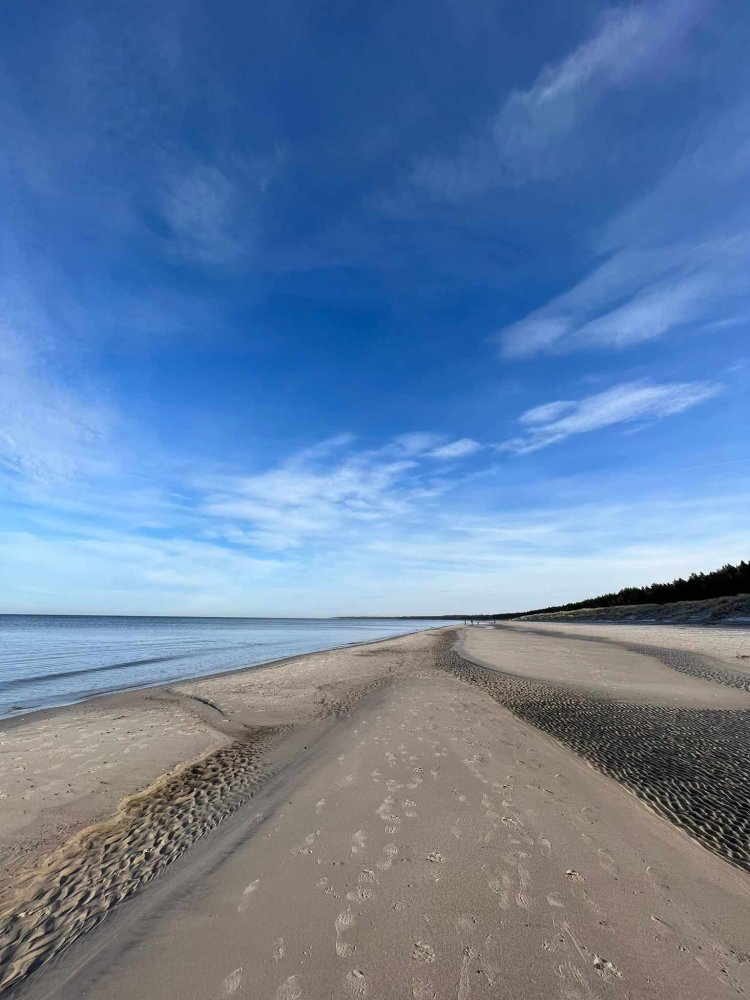Fascination with the Sea
The vastness of the sea always evokes admiration. Depending on the weather, the waves can either crash against the shore and breakwaters, or lazily flow, inducing relaxation, artistic inspiration, and comfort in humans.
What is Thalassotherapy?
Thalassotherapy is a form of treatment that utilizes everything related to the sea for therapeutic purposes. The name comes from the Greek language, where "thalassa" means "sea," and "therapein" means "to heal." Thalassotherapy pays special attention to what the sea offers us, including the coastal climate, salty water, sand, mud, algae, salt, aquatic vegetation, shells, seaweed, some marine animals, and other marine treasures. Thalassotherapy is not only sea therapy but also the utilization of other factors such as air and marine plants (e.g., algae and marine mud), which have a beneficial impact on health and beauty.
Secrets of Thalassotherapy: Benefits of Marine Treasures
In therapy, all elements that can serve as therapeutic factors are essential.
- Of course, water plays a crucial role here, rich in various minerals and seaweed, abundant in minerals (magnesium, potassium, calcium, iodine, iron), and vitamins (vitamins D, A, B12, C, E). Baths in seawater and compresses with aquatic vegetation support detoxification, improve skin condition, relax, and stimulate immunity.
- Sea salt has a beneficial effect on acne by drying out skin lesions. Saltwater can also be recommended for allergic eczema and psoriasis. The air above the sea is relatively clean, low in allergens, moist, and saturated with iodine.
What does Thalassotherapy involve?
Thalassotherapy is a form of treatment that utilizes the coastal climate and therapeutic factors related to the sea. The name originates from the Greek word "thalassa," meaning "sea." During thalassotherapy, the entire spectrum of elements related to the marine environment is utilized, such as:
- Hydrotherapy
It includes baths in seawater (in pools or special tubs), hydro massages, showers, underwater massages, and seawater wraps. - Climate therapy
It involves staying in a seaside climate, walking along the shore, benefiting from the beneficial properties of the sea air. - Aerosol therapy
Inhaling air rich in natural sea water suspension, which contains mineral salt particles. Coastal air is free from allergenic factors and typical city pollutants.
Music therapy and sensory experience
Thalassotherapy is not only body treatment but also sensory stimulation through specific music therapy. By listening to the sound of the sea and seagulls, we experience harmony and peace. Additionally, the therapy engages many senses: touch through barefoot walks on the beach or bathing in water, the taste of salty water, the sound of the sea, the "rustle" of shells and bird singing, as well as the smell of sea air and seaweed.
Application of sea therapy: From recreation to treatment
It's worth considering thalassotherapy not only for recreational purposes but also for therapeutic ones. Learn about the indications and contraindications for this therapy.
Conditions where therapy with marine benefits can provide relief include:
- weak immunity - valuable substances contained in seawater, such as potassium, magnesium, sodium, and calcium compounds, positively affect the body's condition
- allergies
- back pain
- diabetes
- cardiovascular diseases
- thyroid hypofunction - Iodine present in sea air regulates the functioning of this gland
- osteoporosis
- rheumatism or rheumatoid arthritis
- respiratory system disorders, e.g., chronic obstructive pulmonary disease, asthma, chronic sinusitis, and other respiratory diseases
- leg swelling and varicose veins
- skin disorders, e.g., acne, atopic dermatitis, psoriasis
- mood swings
- chronic stress
Contraindications to thalassotherapy
Nevertheless, there are contraindications, such as hyperthyroidism, acute mental conditions, pain associated with nerve root inflammation, sensitivity to light, photosensitive epilepsy, and kidney diseases.
Seaside resorts on the Polish Baltic Sea: A place for Thalassotherapy
Thalassotherapy is the domain of seaside resorts. It is not effective in other regions. The therapy should be tailored to the patient, with the course determined by a specialist in balneology and physical medicine, a physiotherapist, and a therapist leading walks in the maritime area. Additionally, occupational therapy may be involved in the treatment. The therapy should last for about a month, that is, 3-4 weeks, to achieve the intended effects.
Forms of Therapeutic Contact with the Sea: Baths, compresses, aerosols
Thalassotherapy uses seawater in various forms: in its natural state, in pools, as showers, and "water whips." Compresses are made from seaweed, and sometimes rubbing is also used. The first therapeutic bath in seawater should not last longer than 3 minutes, gradually increasing the time to a maximum of 12 minutes after 12 days. The water temperature should be around 16-17°C. After the bath, it is recommended not to wipe the skin but to let it dry during a relaxing walk. An additional element of the therapy is "air bathing," using aerosol sea water, i.e., fine droplets dispersed in the air. The first experience with sea air should last about an hour, increasing the time by 10 minutes with each subsequent session. After almost two weeks, the walk should last about three hours.
Thalassotherapy in Poland by the Baltic Sea
We invite you to enjoy the benefits of nature at the Diva SPA hotel by the sea in Kołobrzeg. Our Medi SPA thalassotherapy treatments, within which we offer unique treatments using Kołobrzeg brine, tailored to the individual needs of each guest.
Read more:
Autumn by the sea in Kołobrzeg
Thyroid problems? Take iodine therapy by the sea in autumn!
Discover our autumn stay package at the Diva SPA hotel in Kołobrzeg






